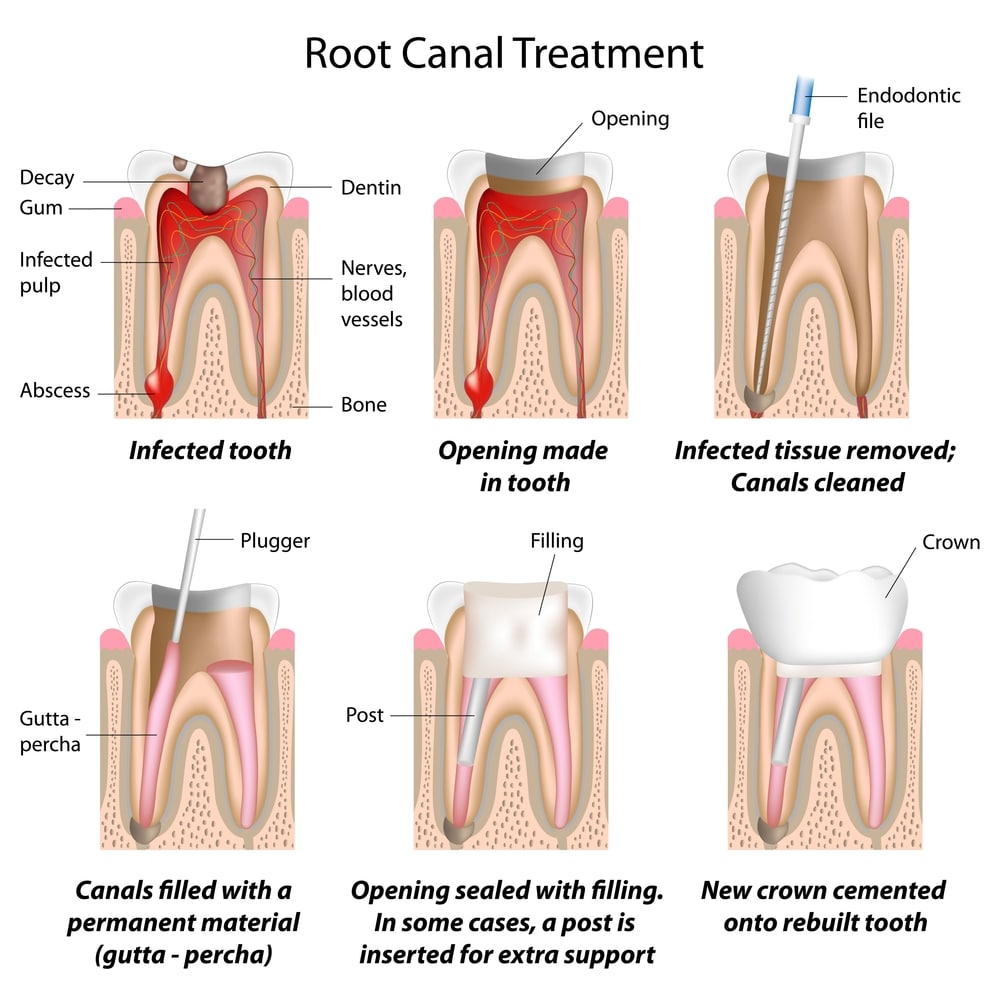A root canal is a dental procedure that is done to fix or restore a tooth that has severely decayed. It is a treatment carried out to save an infected tooth, by removing the damaged pulp or nerve tissue, and sealing the tooth after filling the pulp cavity. This stops the spreading of painful infection that gets developed in the pulp. Even the infections pertaining to an abscessed tooth can be treated with a root canal. This procedure can also alleviate toothache and promote healing.
Signs That You Need A Root Canal
Sometimes there may be no signs to indicate that you need a root canal treatment; however signs of infection severe enough that you may need a root canal include:
· Darkening or discoloration of the tooth
· A persistent pimple-like bump on the gums
· Severe toothache on applying pressure to the tooth
· Prolonged sensitivity to cold and hot temperatures
· Swelling and irritation in the gums near the damaged tooth
How is Root Canal Procedure Done to Ease the Pain?
A root canal treatment is performed by a general dentist or endodontist. During the procedure, the infected or irritated pulp is removed and the tooth is cleaned and sealed carefully. On your initial dental visit, the dentist would prescribe some antibiotics before the treatment is started. Once it has been confirmed that you require a root canal, step-by-step process is followed.
There are five main stages:
· Scoping It Out: To check the extent of damage done to the tooth, your dentist will take X-rays.
· Calming You Down: After assessing how severely the tooth has been infected, the dentist will anesthetize the tooth to numb the area so that you don’t experience any pain during the root canal treatment.
· Diving In: Using a drill, an access hole will be made in the crown of the tooth. Then the decayed pulp, along with the nerve tissue and debris is cleaned out. (Some additional tools can also be used during the procedure, including digital X-Rays, apex locator, and a microscope to minimize damage to the nearby bones and ligaments)
· Cleaning Up: The tooth is thoroughly cleaned, and the debris is removed, with a series of files with varying diameters. Once the tooth has been cleaned, the canal is filled with a rubber-like material called gutta-percha.
· Sealing It: A temporary or a permanent restoration is done by the dentist. On your next meeting, your dentist will place a composite filling in the centre of the tooth. A crown becomes mandatory to protect the teeth against any kind of future pain.
After the Surgery
Once the anesthetic effect is gone, you can experience numbness in lips and gums for a few hours. Prescription painkillers like ibuprofen and acetaminophen can be used to suppress throbbing pain. In case the pain persists, make sure you talk to your dentist regarding the same.
Root Canal Cost
Owing to the high success rate of root canals, a lot of people opt for the procedure. Root canal on back tooth can cost you around $800 and $900 on the crown.

